Winter is here, and that means it’s time to get your landscape ready for the cold. There’s more to winter preparation than busting out the gloves and sweaters. Cold weather can wreak some havoc on your landscape, particularly your plants. The plants may have some built-in protection against ice and snow, but it helps to give them a helping hand so they don’t succumb to the freezing temperatures.
Keep these winter landscaping tips in mind to prevent your landscape from looking like a tundra.
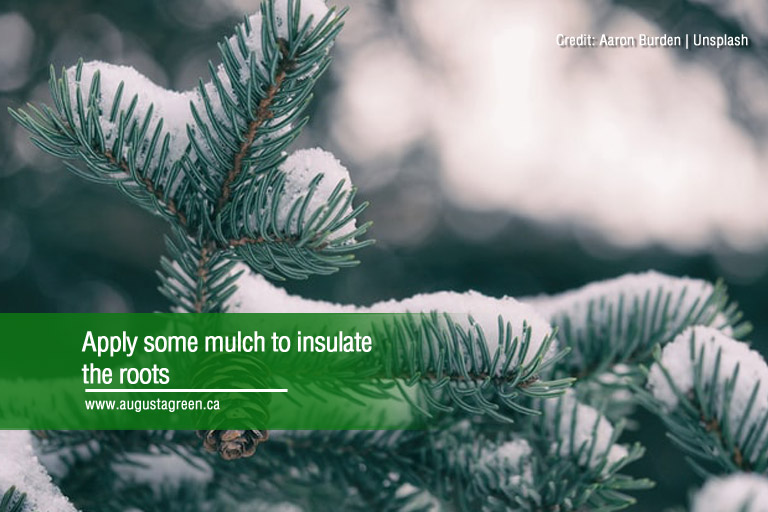
Plant smart
It pays to choose plants that thrive in your local environment. Plan ahead before planting any plants outside to ensure they’re tough enough to survive when it gets cold. For example, if you live in a freeze-prone area, perennials and other winter-resistant plants are a prudent choice. Those plants are tough enough to withstand winter with minimal effort on your part.
Do some research on the plant hardiness zone in your area to find out which plants are more suitable for your landscape. This strategy also works if you’re planning some landscape renovations in the future. Keep these ideas in mind to make choosing the right plants easier when you’re in the market for new plants to spice up your garden.
Put down some mulch
A handy layer of mulch is always a boost to a plant’s health. Normally, mulch helps plants retain water, but in winter, it also works as an insulator. When it gets too cold, soil often tends to freeze, thaw, and refreeze. The cycle then causes plants to heave, which can break roots and push them above the soil.
A generous layer of mulch keeps the soil warm, preventing it from freezing and keeping the plants’ vital root systems intact. After the ground starts to freeze, apply roughly 10 cm of mulch to the roots. Straw, finely chopped leaves, and shredded bark all make for a great mulch. As usual, refrain from laying the mulch too close to the stem to avoid smothering the roots and promoting fungi growth.
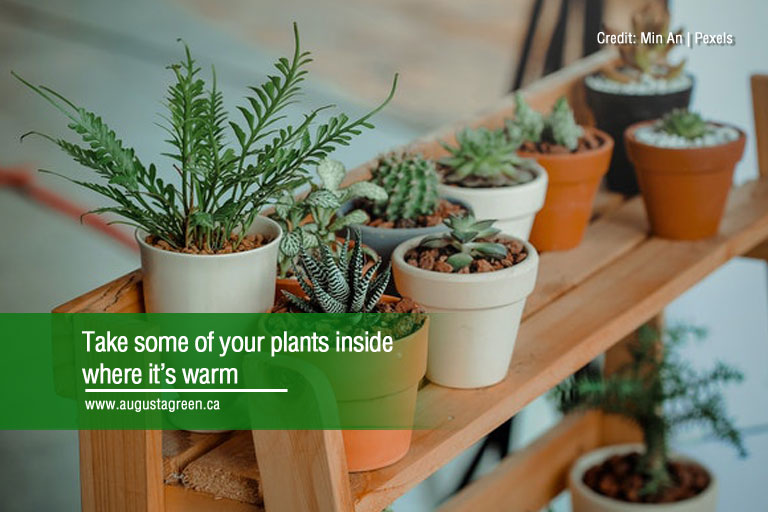
Bring your vulnerable plants indoors
If temperatures drop below freezing, some of the more vulnerable plants may be better off indoors. If you want to reuse plants like dahlias, cannas, and elephant ears, dig them up and store them inside. Keep those plants in areas where they can get bright, indirect light for at least 5 hours a day. Changes in humidity can drastically affect your plants, so keep them in places that aren’t prone to drafts, like windows or air vents.
Finally, make sure the plants stay in an elevated location. Cold air tends to linger closer to the floor, so higher elevation can help the plants stay warm. To sweeten the pot further, keeping your plants indoors is also a great way to enjoy fresh air all through the winter.
Insulate your outdoor plants
Even when your outdoor plants are tough enough for winter, it often helps to give them a helping hand. Young trees in particular are vulnerable to extreme cold and can benefit from some extra TLC until they get a little older. Thin-barked trees like ash, linden, and maple are vulnerable to frost cracking and sunscald. If you have those trees take steps to give them some additional protection.
Try wrapping the tree with thick paper tree wrap or burlap to help them retain some heat when the temperature drops. You can also use mulch, pine straw, or nearby snow to insulate the trees’ roots for greater heat retention. The root systems are a tree’s lifeline and anchor, so pay extra attention to them.
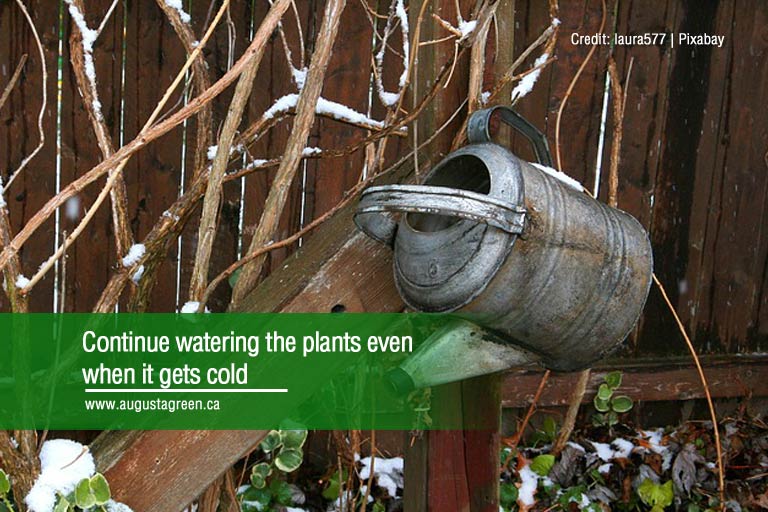
Keep watering your plants
When the weather gets colder, some homeowners tend to stop watering their plants, but that’s a common watering mistake you need to avoid. While plants go dormant in the winter, reducing how much water they need, they still need water. Winter also tends to get dry, making it important to continue watering your plants.
Water your plants regularly to ensure they maintain water storage, especially when the ground freezes. When that happens, the roots can no longer absorb water so the plant will have to rely on what you watered them with earlier. Stick to deep watering to ensure the water soaks deep into the ground so the plant can absorb the moisture more easily. More water in the ground also helps insulate the soil so the plants have an easier time regulating their temperature.
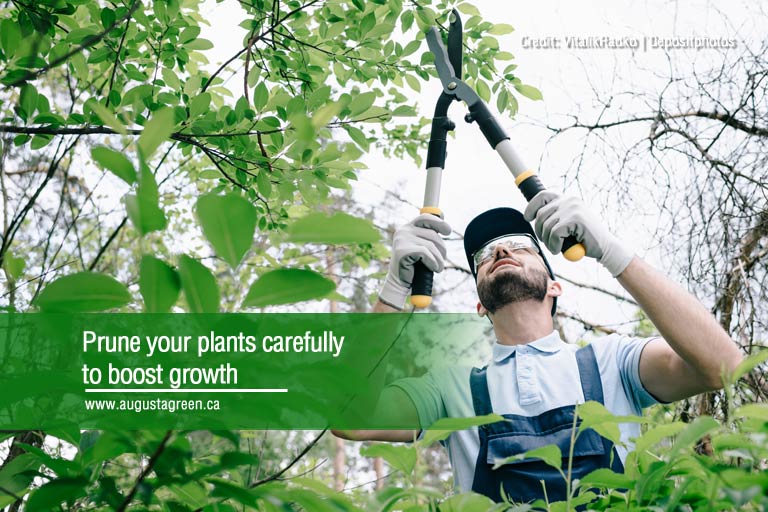
Prune at the right times
One great landscaping idea is to make sure you prune your trees at the right times. Proper pruning is a great way to promote the healthy growth of your trees.
Pruning encourages growth and guides the plant to grow in the direction you desire so your trees can add to the winter landscape. For deciduous trees, prune in late fall or early spring. At those times, they’ve lost their foliage and gone dormant, so it’s a good time to prune without causing damage. For evergreens, prune in spring when they’re entering their growing season to give them a boost. Whatever the species, refrain from pruning after early summer to give the new foliage time to harden in preparation for winter.
Avoid salt de-icers
Ice is inevitable in winter, but that’s why we have de-icers. However, now might be a good time to look for some alternatives to road salt. When absorbed through leaves or roots, excess salt leaches moisture from plant cells, causing them to dry out. Sand is a good substitute, as are calcium- or potassium-based de-icers, as long as you use them sparingly.
Take particular care when de-icing near any tree roots to avoid doing harm. If you live near a high-traffic area, it may also help to cover up any plants and trees near the roads to ensure they aren’t exposed to any salt used to clear the roads.
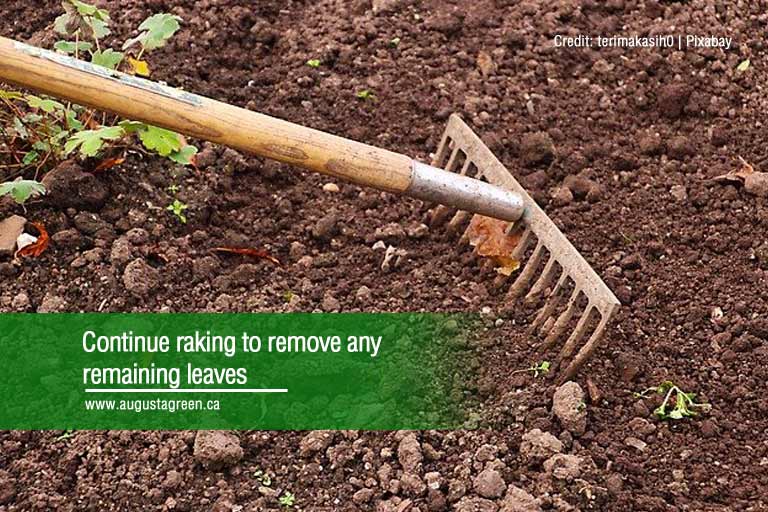
Continue to rake
For most people, fall is the season for raking, but it’s still a good idea to keep it up even when the snow starts to fall. Any remaining leaves mixed with the snow are conducive to mould growth. For the sake of your landscape, continue to rake thoroughly to ensure the plants stay healthy (and keep the garden looking neat and clean).
When it comes to winterizing your home, it pays to be prepared. Keep these tips in mind to help get your winter landscape ready, and take some other steps to protect other vulnerable areas as well. Winterize your irrigation system, for example, to minimize the risk of damage, and ensure you can continue taking care of your plants when spring returns.
Whenever you need some help sprucing up your landscape, give Augusta Green Sprinklers a call. We offer full-service landscape irrigation and lighting to help your landscape look great any time of year. Call us now at (416) 227-1666; we’re here to help.

